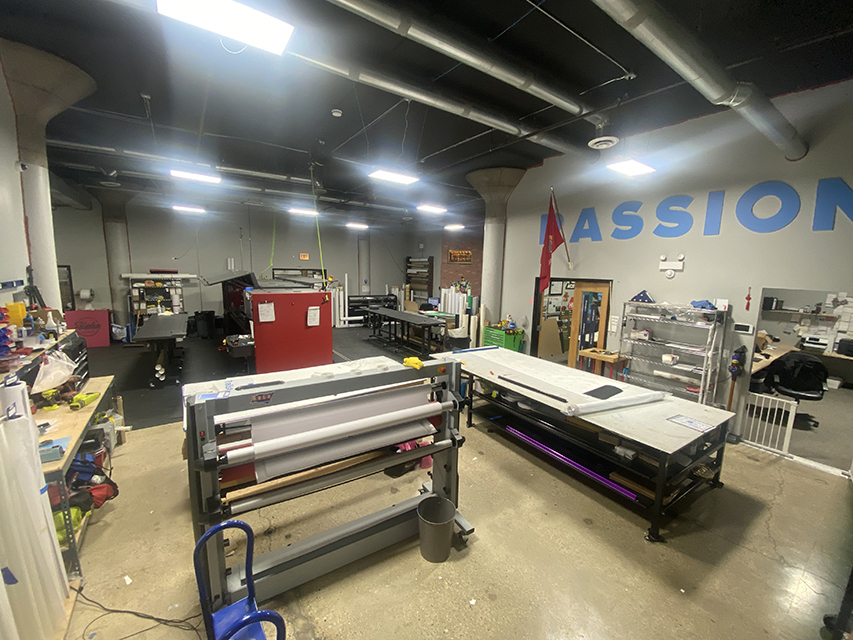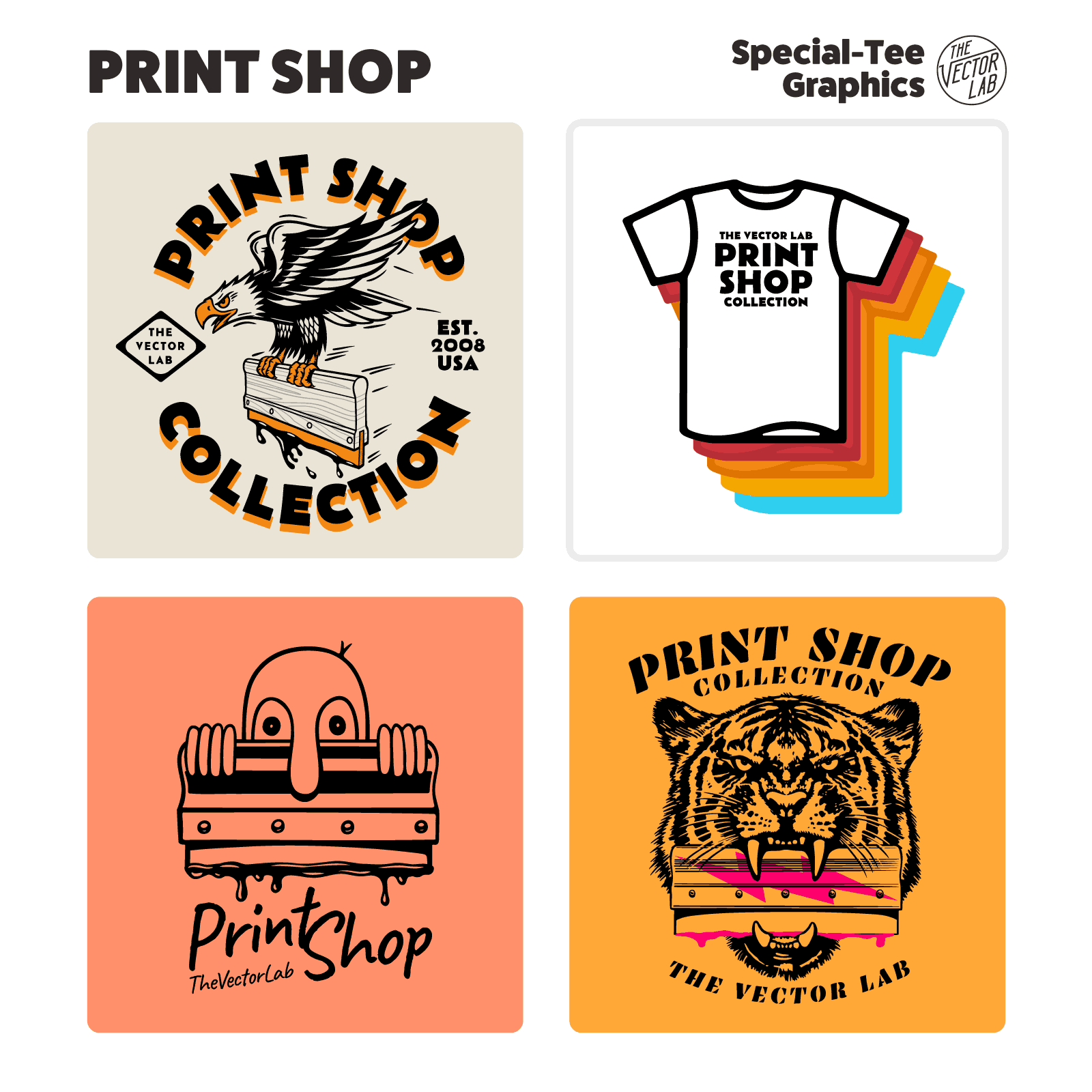Why Every Interior Designer Relies on a Print Shop Near Me
Why Every Interior Designer Relies on a Print Shop Near Me
Blog Article
The Ultimate Guide to Using Printing Providers for Customized Art Prints
Steering with the world of custom art prints calls for a clear understanding of different printing solutions. Artists need to think about factors such as printing strategies and materials to attain the preferred result. Each decision, from art work preparation to shade calibration, plays an important function in the end product. As they discover these aspects, artists can disclose the capacity for their job to connect with audiences in a purposeful way. What actions can they require to guarantee their prints stand apart?
Understanding Different Sorts Of Printing Providers
Although lots of people might neglect the intricacies of printing solutions, understanding the various kinds offered is important for any person looking to produce custom-made art prints. One of the most common types include digital printing, counter printing, and display printing. Digital printing is preferred for its fast turn-around and ability to create high-grade images directly from digital data, making it excellent for tiny runs. On the other hand, offset printing offers remarkable photo top quality and is cost-effective for larger quantities, making use of plates to move ink onto paper. Display printing, frequently used for textiles and advertising things, entails pressing ink with a mesh display, enabling vibrant colors and textures. Each technique has its one-of-a-kind benefits and restrictions, making it crucial for artists and designers to examine their certain demands, such as amount, preferred top quality, and spending plan, before selecting a printing solution that aligns with their creative vision.
Picking the Right Products for Your Prints
Choosing the suitable products is important for achieving high-grade personalized art prints. Understanding the various types of paper and the relevance of ink top quality can substantially impact the outcome. Artists must take into consideration these variables to ensure their vision is precisely stood for in the printed item.
Paper Types Explained
Picking the ideal paper type is essential for achieving the desired aesthetic and durability in personalized art prints. Different choices exist, each offering distinct features. Glossy paper enhances color vibrancy and information, making it optimal for digital photography prints. On the other hand, matte paper gives a softer surface, which is more effective for artwork that calls for nuance and structure. Fine art paper, often made from cotton or alpha cellulose, supplies historical top quality and is appropriate for duplicating detailed details in paintings (Print Shop Near Me). In addition, specialty papers, such as watercolor or canvas, can add unique aesthetic impacts. Inevitably, picking the suitable paper kind will significantly influence the last presentation, making certain that the artwork is both long-lasting and aesthetically enticing
Ink Quality Matters
Ink high quality plays an important function in the total success of customized art prints. Premium inks assure dynamic colors, sharp details, and durability, which are crucial for showcasing imaginative job. When choosing printing solutions, artists must consider pigment-based inks over dye-based alternatives, as they provide far better discolor resistance and shade stability. In addition, the selection of ink need to enhance the chosen paper kind, boosting the print's aesthetic effect. Environmental variables, such as moisture and temperature level, can additionally influence ink performance; therefore, artists should inquire concerning ink solutions that stand up to these elements. Inevitably, purchasing remarkable ink high quality can raise the end product, guaranteeing that the art print holds to the artist's vision for many years to come.
Exploring Printing Strategies: Digital vs. Typical
While both electronic and typical printing techniques have their special advantages, the choice on which technique to use usually depends upon the specific demands of the art work. Digital printing masters adaptability and speed, permitting fast turn-around times and the ability to publish as needed. This approach is specifically useful for artists who call for little runs or unique items, as it removes the need for considerable configuration processes.Conversely, standard printing techniques, such as lithography and display printing, typically produce richer colors and textures, interesting artists looking for a more authentic and responsive surface. These methods can improve the deepness and quality of the art work, making them appropriate for larger editions. In addition, traditional techniques might use a distinct visual that electronic printing often battles to replicate. Eventually, the option in between these techniques must take into consideration elements like wanted top quality, quantity, and creative intent, directing musicians to one of the most appropriate choice for their tasks.

Preparing Your Artwork for Printing
Efficiently preparing art work for printing calls for cautious interest to detail, despite the selected printing method. Artists need to guarantee that their files are produced at the appropriate resolution, typically 300 DPI, to maintain intensity and quality. The correct shade setting, typically CMYK for print, is vital to accomplish the preferred shade precision. Artists need to additionally consider the measurements of the art work, making certain to consist of bleed locations if required, to avoid any undesirable white edges after trimming.Additionally, documents layouts play an important role; TIFF and PDF are often chosen for high-quality prints. Prior to entry, it is necessary to assess the artwork for any type of imperfections or unwanted components. By thoroughly examining these facets, artists can improve the probability of their prints lining up with their innovative vision, eventually resulting in an effective printing result.
The Significance of Color Calibration and Proofing
Color calibration and proofing are important steps in the printing procedure, as they ensure that the last result precisely reflects the musician's vision. Appropriate color calibration warranties that the colors showed on the screen suit those that will certainly be published. This process involves readjusting the screen settings, printer accounts, and inks to accomplish a constant color representation.Additionally, proofing enables artists to sneak peek their job prior to the final print run. This stage allows them to discover and remedy any kind of disparities in detail, saturation, or color, thereby minimizing pricey errors. By utilizing electronic or hard-copy evidence, musicians can make enlightened choices regarding adjustments needed for ideal results.Incorporating shade calibration and proofing right into the printing operations not just web link enhances the quality of the last item but additionally fosters a trustworthy partnership between the printing and the artist solution, guaranteeing contentment and fidelity to the original art work.
Picking the Perfect Dimension and Layout for Your Prints

Advertising and Selling Your Personalized Art Prints
Advertising and marketing and selling personalized art prints needs a solid brand identity to stand apart in an open market. Efficient online promotion methods and the calculated use social media platforms can greatly improve presence and engagement. By incorporating these aspects, musicians can produce a compelling visibility that attracts potential customers.
Structure Your Brand Name Identification
Establishing a strong brand name identification is essential for artists aiming to efficiently market and sell their custom art prints. This identity encompasses the musician's one-of-a-kind style, values, and story, which reverberate with prospective customers. Musicians ought to produce a natural aesthetic visibility across all platforms, including logo designs, color schemes, and typography that mirror their artistic vision. Additionally, a clear objective declaration aids connect the musician's purpose and passion. Engaging storytelling about the inspiration behind each piece can cultivate psychological links with the audience. Uniformity in messaging, whether on social media sites or product packaging, enhances recognition and count on. By thoroughly curating their brand name identification, musicians can separate themselves in an affordable market, bring in faithful consumers that appreciate their creativity.
Effective Online Promo Methods
What methods can artists utilize to successfully promote their custom art prints online? Initially, creating an expert web site showcasing the artwork is essential. This website must consist of detailed summaries and high-grade pictures to engage possible purchasers. In addition, artists can utilize e-mail advertising by building a customer list to share updates, promos, and new launches. Teaming up with bloggers and influencers in the art neighborhood can expand reach and reliability. Providing exclusive items or limited-time discount rates can additionally develop seriousness, motivating purchases. Moreover, enhancing content for online search engine with relevant search phrases will boost exposure. Maintaining a blog site about the creative procedure can attract art fanatics, promoting a much deeper link with the target market and enhancing the overall advertising and marketing strategy.
Utilizing Social Media Site Operatings Systems
Social media platforms serve as effective devices for artists aiming to market and sell their personalized art prints. By leveraging systems like Instagram, Facebook, and Pinterest, musicians can display their work to a large audience. Involving visuals and strategic hashtags can enhance exposure, drawing prospective purchasers to their accounts. On a regular basis uploading web content, such as new designs or behind-the-scenes processes, helps maintain audience interest and fosters a feeling of neighborhood. In addition, musicians can make use of targeted advertising and marketing to get to details demographics, improving the chances of sales. Partnerships click this link with influencers or other artists can better amplify direct exposure. Ultimately, a well-curated social media visibility not only advertises customized art prints however also builds a dedicated consumer base with time.
Regularly Asked Inquiries

Just how Do I Locate Trusted Printing Service Providers?
To discover trustworthy printing provider, one should investigate online testimonials, look for recommendations from peers, compare profiles, request samples, and examine customer support responsiveness. This extensive method warranties notified decisions and sufficient results.
What Is the Typical Turnaround Time for Custom-made Prints?
The normal turnaround time for personalized prints varies by provider, however generally ranges from a few days to two weeks. Factors influencing this include order dimension, intricacy, and the details printing methods made use of.
Can I Obtain a Refund if I'm Not Completely satisfied With My Prints?
The inquiry of obtaining a reimbursement for unacceptable prints commonly depends upon the certain printing solution's policies. Numerous business supply fulfillment assurances, while others may have stringent return problems, stressing the significance of examining terms beforehand.
Exist Any Hidden Expenses Related To Printing Providers?
Lots of printing solutions might consist of surprise prices such as arrangement fees, shipping charges, or extra charges for details materials. It's necessary for consumers to ask concerning all possible expenditures before finalizing their order.
Just How Can I Guarantee My Prints Are Eco Pleasant?
To guarantee prints are ecologically friendly, one ought to select green inks, recycled paper, and sustainable printing practices. Looking into printing solutions that focus on sustainability and getting qualifications can better ensure marginal ecological impact in the printing process. Guiding with the world of custom art prints requires a clear understanding of blog here numerous printing services. Numerous individuals might forget the ins and outs of printing services, understanding the numerous kinds offered is vital for any individual looking to produce custom art prints. The most usual types consist of electronic printing, balance out printing, and screen printing. Efficiently preparing art work for printing requires mindful interest to detail, no matter of the selected printing technique. Prints intended at galleries might call for standard dimensions to help with framework, whereas special formats might appeal to collection agencies looking for something distinctive.Lastly, the printing service's capabilities have to be examined.
Report this page